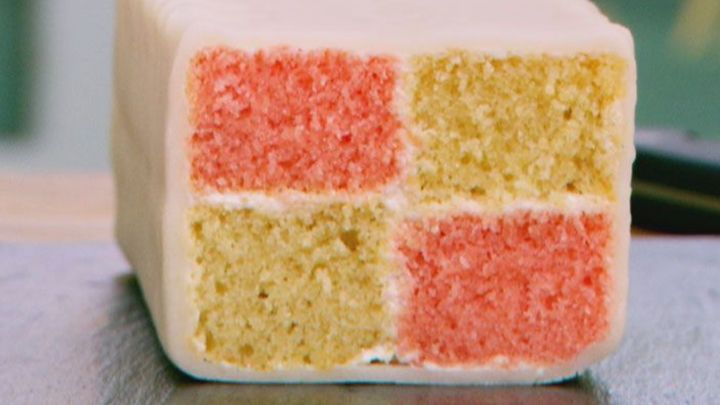
Having watched this year’s Great British Bake Off contestants attempt to make a Battenberg without a recipe, I realised how poor my own skills are.
After all, I don’t think I’ve ever made marzipan in my life ― the almond and sugar paste is notoriously hard to get right.
Turns out, though, that the Bake Off hopefuls got off lightly by Victorian standards.
The Battenberg cake, which was allegedly invented for Queen Victoria’s granddaughter Princess Victoria’s marriage to Prince Louis of Battenberg in 1884, was first written down in 1898 France.
A very similar recipe called church window cake appeared in the North of England in 1898, too.
It’s alternately spelt Battenburg and originally looked very different (and much more complicated) to the one we know now.
What was the original recipe?
For starters, it used a Genoese, rather than a Victoria, sponge.
Genoese sponges rely on the air trapped in whipped egg whites, rather than baking powder, to rise. That involves a lot more work and more delicate folding.
These types of sponges predate Victoria-style sponges by centuries because baking powder was only invented in the 1850s.
One GBBO contestant made a chiffon cake for this week’s technical challenge, which uses a similar method.
Cordon Bleu’s site says that Battenberg cakes originally had nine squares rather than four too, while food historian Ivan Day says some early versions boasted as many as 25 squares (!!!).
English Heritage says this disproves a common theory about the dessert’s origins.
Some people think that the four sections of the cake refer to Prince Louis of Battenberg and his three brothers, according to English Heritage, but its nine-square-or-more origins disprove that.
They add that ”there is no known evidence to support” the idea that the cake was invented for a royal wedding, either.
Why does it have four squares now?
Well... it’s just a bit easier, isn’t it?
Once the cake went into mass production before the Second World War, English Heritage says its four-square look became more or less ubiquitous.
“Four squares in Victoria sponge would be easier to produce on a large scale than the more complicated nine squares of Genoese sponge,” Cordon Bleu agrees.
By the time post-war rationing had ended, British bakers were used to the simpler design (and to be honest, I don’t see us going back).